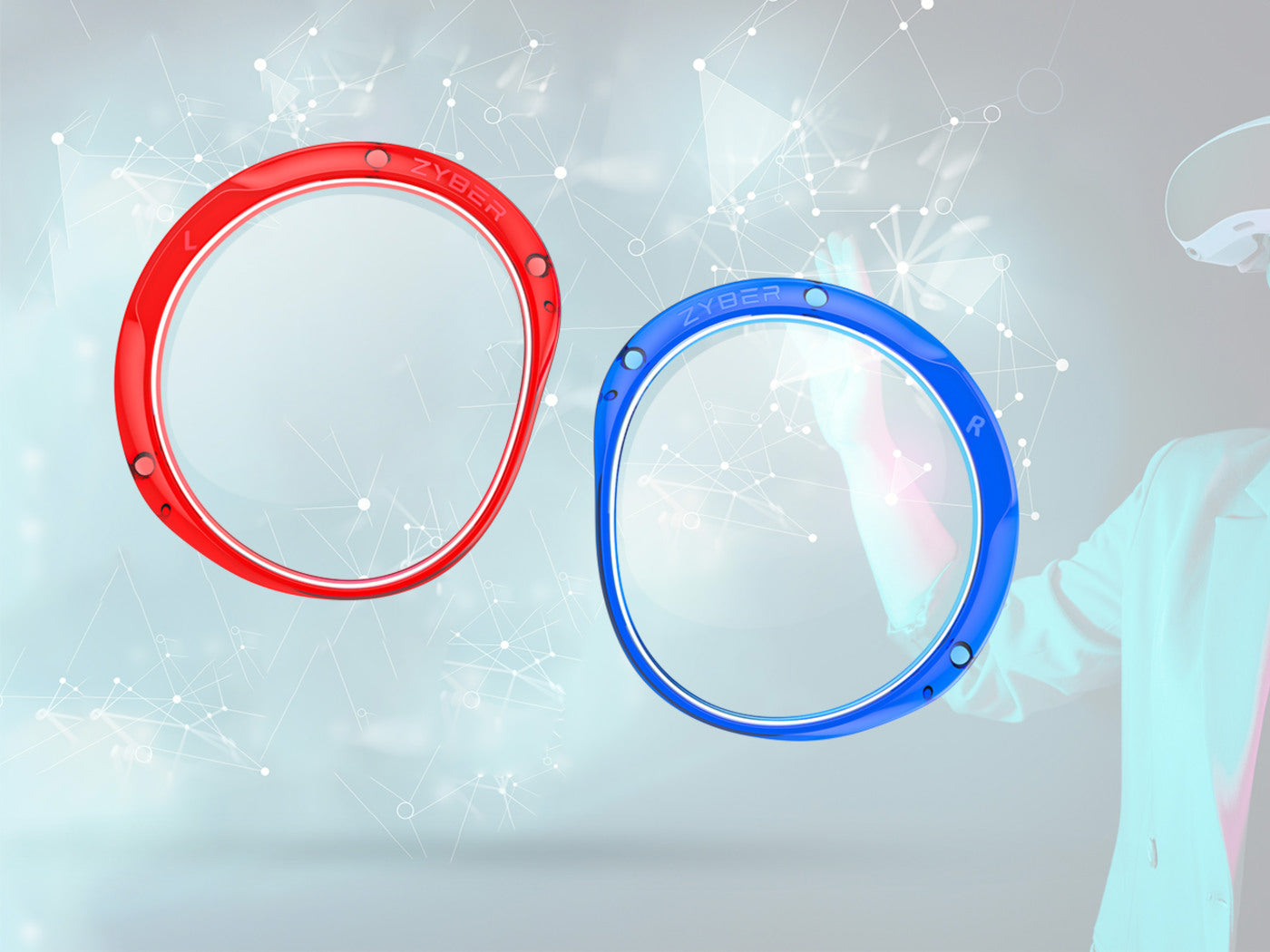Virtual Reality has become a global sensation, captivating audiences with its immersive experiences and groundbreaking technology. However, a common question arises: "Is VR bad for your eyes?" In this article, we will discuss the effects of VR on vision, specifically examining popular VR headsets like the Meta Quest 2 and Pico 4, PSVR2, along with their prescription lenses. Our goal is to shed light on how these VR devices interact with your eyes and whether prescription lenses can mitigate any potential risks. Whether you're a passionate VR gamer or a concerned parent, join us as we explore the fascinating world of VR and its impact on eye health.
Do VR Headsets Harm Your Eyes?
Virtual Reality headsets, like the Meta Quest 2, Pico 4, and PSVR2, operate using two LCD monitors. This experience is similar to placing two smartphone screens close to your eyes. Despite concerns, current research indicates that there is no solid evidence linking VR screens to adverse effects on eye development. This is why most VR headset manufacturers set the age limit around 12-13 years.
However, it's important to note that VR screens, much like phone screens, are a relatively recent invention. While it might feel like they've been part of our lives forever, especially for younger generations, we still lack a comprehensive understanding of their long-term effects on our vision. Therefore, we can't completely rule out any potential consequences.

In the short term, we do know that using VR can cause digital eye strain, a condition also associated with prolonged usage of other digital screens. Symptoms can include discomfort, dryness, and tired eyes. It is essential to take regular breaks and consider using prescription lenses specifically designed for VR headsets to alleviate strain and optimize the VR experience.
Can VR Help Improve My Eyesight?
When used under the guidance and instruction of an optometrist, certain VR headsets may actually contribute to vision development and improvement. Innovative systems have been designed specifically to enhance visual acuity in conditions like amblyopia, commonly known as 'lazy eye.' In addition to this, VR technology can be utilized to improve eye-hand coordination, depth perception, reaction time, and overall eye coordination.

This suggests that VR isn't only for gaming or entertainment; it could also play a crucial role in vision therapy and rehabilitation. However, more research is needed to fully understand and substantiate these potential benefits.
Are VR Headsets Safe For My Children’s Eyes?
The immersive nature of VR primarily caters to the gaming market, which is predominantly occupied by children and young adults. In the U.S. alone, around 75% of children under 18 were identified as gamers in 2021.
Children are particularly vulnerable to the potential risks associated with virtual reality (VR) due to their ongoing development of depth perception, focus, and tracking skills. The implications of VR for children include increased myopia, similar to prolonged exposure to screens, as well as digital eye strain. Additionally, some VR content may not be suitable for younger audiences and could cause distress. 
Manufacturers exercise caution by placing age restrictions, typically 13 years and above, on their VR devices. Even devices without specific age limits explicitly state that they are "not designed for children." While VR itself is not inherently harmful to children, it is important to take precautionary measures to protect their mental well-being and vision development.
Ways In Protecting Your Eyes When Using VR
Given the potential risks associated with virtual reality, there are several steps you can take to ensure your eyes remain healthy and safe:
1. Ensure a comfortable and immersive VR experience by following these tips:
2. Take regular breaks during VR sessions, limiting them to 30 minutes at a time.
3. Properly fit the headset to your head size and align the lenses with your eyes.
4. Use adjustable interpupillary distance (IPD) settings to reduce eye strain and improve focus.
5. Consider investing in prescription lenses for VR headsets like prescription lenses for Quest 2, Pico 4, or PSVR2 for added comfort.
6. Keep your lenses, face cushion, and head straps clean using lens cloths and sprays to prevent dirt or sweat buildup that may lead to eye strain.
7. Minimize distractions in your surroundings to reduce visual stimulation that can cause dizziness or fatigue.
8. Adjust brightness and contrast settings on your VR headset to avoid eye strain in different lighting conditions.
9. Stay hydrated to prevent dry eyes and maintain optimal focus and comfort while using VR.
Recommended VR Prescription Lenses To Buy:
1. ZyberVR Quest 2 Prescription Lenses
2. ZyberVR Pico 4 Prescription Lenses
3. ZyberVR PSVR2 Prescription Lenses
Conclusion
Virtual reality can be a great way to explore new environments and experiences but like any other technology, it’s important to take certain precautions to ensure your vision is not impacted. Keep these tips in mind to make sure you are using your VR headset safely and enjoyably! With the right precautions, you can protect your eyes while enjoying all that virtual reality has to offer.





